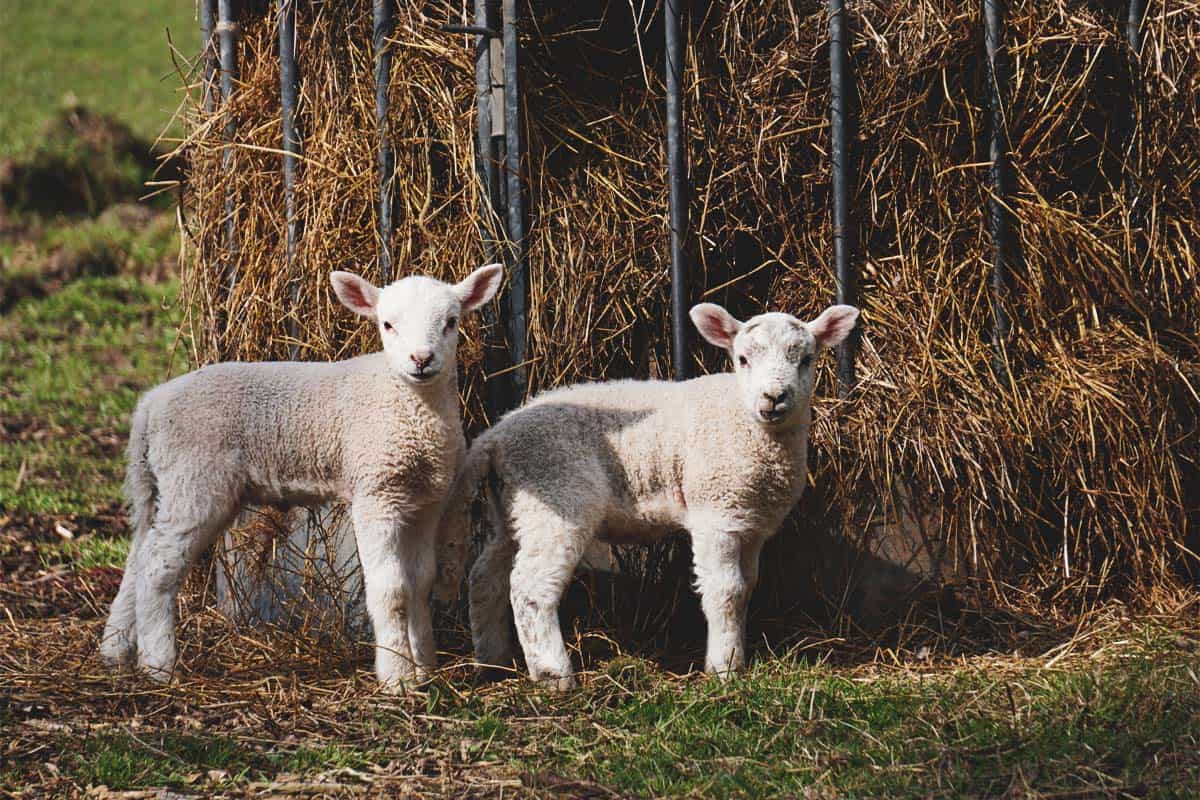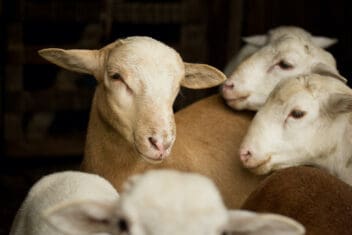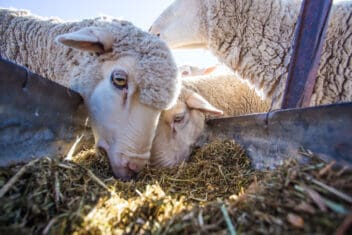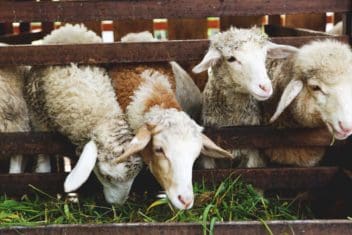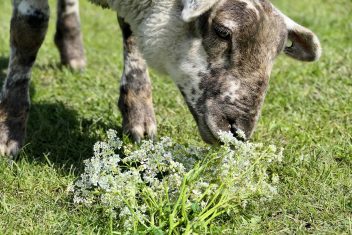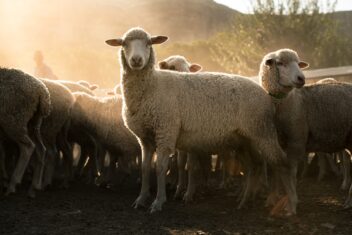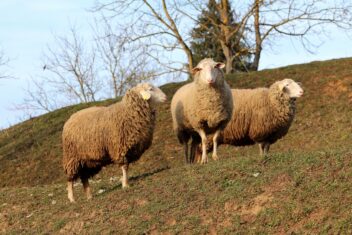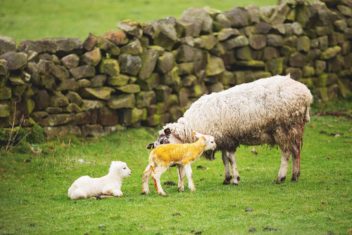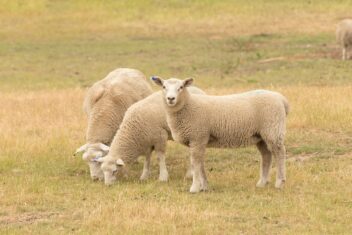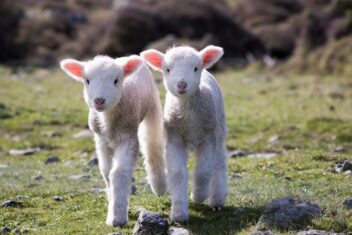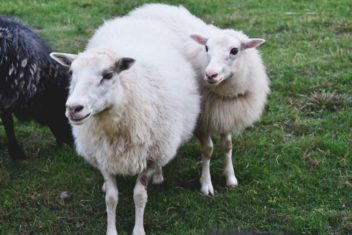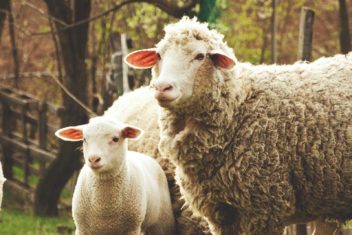As the weather warms up and your lambs grow bigger and more precocious, you might find yourself wondering, “how and when do I wean these guys?”
The short answer is that there is really no right or wrong time to wean lambs. In many cases, the timeframe in which lambs are ready to be weaned will depend on their breed, the difficulty of lambing, the availability of food, and several other factors.
Sometimes, lambs and their mothers will more or less wean themselves.
Nevertheless, it’s important to understand the ins and outs of weaning so that you can be better prepared for this event when it needs to happen. It’s also good to be ready in case you need to intervene.
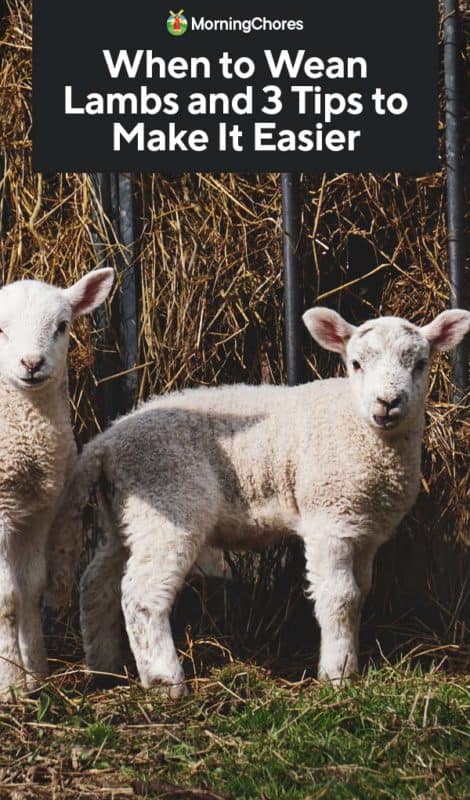
Why You Need to Wean Lambs
In most cases, lambs will wean themselves. Over time, they will begin to eat more hay and other “solid” foods. Gradually, they will not nurse from their mothers quite as often.
Feed Efficiency
Early in life, lambs cannot digest anything but their mother’s milk (or milk replacer, of course). Shortly after the lamb is born, it will start nibbling on dry foods on its own, mostly out of curiosity, and because it is imitating mom. However, it won’t be enough to compromise a significant portion of its diet.
By the time the lamb is about three weeks of age, its rumen will begin to develop and it will be more efficient at converting whatever it was nibbling on, into useful nutrients.
It is less efficient to feed ewes who are lactating than it is to feed two separate sheep – mother and lamb. Let me explain:
Once the lambs are weaned, the ewes will require less nutrition and it will be easier for you to manage your flock. Simply put, it is more efficient for you to feed a ewe and a lamb separately than it is to feed a ewe that produces milk that a lamb will then consume.
However, there are some other situations in which you may need to wean lambs earlier than they do on their own naturally, too.
For example, you may need to wean early in order to accommodate situations like drought or other environmental concerns. Some shepherds wean sooner so that they can then breed their ewes.
Environmental Conditions
For example, when the weather and environmental conditions are not favorable (like lambing in the early spring) or pasture is in short supply, you might want to wean lambs a bit earlier.
Space and Capacity Concerns
Lambs that are raised on milk replacer and supplemented colostrum are often weaned earlier than their nursing counterparts, too. Orphan lambs should always be weaned early, but this should still not occur until the lambs are at least 30 to 45 days old.
Weaned lambs are efficient converters of feed to lean tissue – sometimes more efficient than adult ewes, in fact. Weaning your lambs early will let you maintain more sheep on a set amount of land.
The Right Age (or Weight) to Wean Lambs
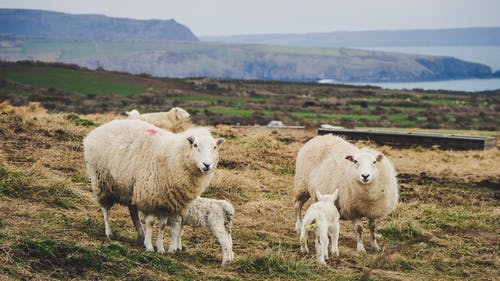
You should avoid weaning lambs before five weeks of age, but even this can be a bit dicey. You should only wean lambs this young if they can be raised on a high-quality diet.
Otherwise, wait a while. Ideally, you should wait until your lambs are at least eight weeks old. This is when the rumen is completely developed. It is functioning, but not quite fully operational when the lambs are five weeks old.
Wait until the lambs are 70 and 90 days of age for weaning. You should wait longer if the pasture is not of high quality (a high-quality pasture for weaned lambs would be clover or alfalfa).
In order to wean lambs before they are eight weeks old, you’ll need to make sure they have plenty of high-quality feed and that they do not develop acidosis. The smaller your lambs are, the longer you will want to wait to wean them, too.
What’s more important than weaning your lambs at a certain age is weaning at a certain weight. Again, small lambs need to be weaned later than large lambs. You should wait until your lambs are about 45-pounds in order to wean them. Another trick you can use to figure out whether the lambs are ready to be weaned is to multiply their birth weight times three.
If you are weaning orphan lambs who have been fed exclusively on milk replacer, you can wean them when they are 30 to 42 days old. It can also be done when they are 25 to 30-pounds.
The Best Tips for Weaning Lambs
The best way to wean lambs is to do so gradually, over a period of time. You should begin the weaning process approximately two weeks before you actually plan to separate the mothers from their young. If you wean lambs too quickly or abruptly, this can stress the mother and her lamb.
It can also cause issues with drying off ewes. This can lead to mastitis, an infection of the milk ducts.
There are a few ways you can go about this.
1. Provide Supplemental Feed
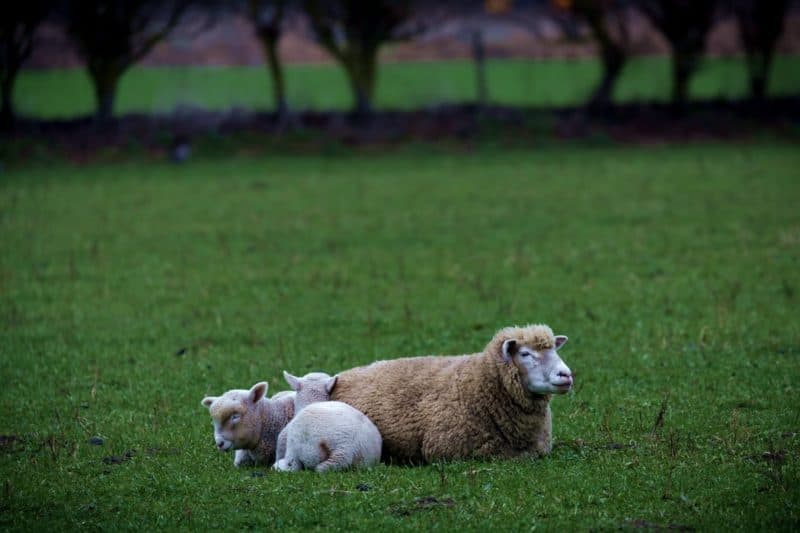
Lambs need to be given some solid feed at a minimum of fourteen days before weaning. The easiest way that I have found is to simply allow lambs to access the same feeding and watering areas as their mothers. They gradually begin to nibble on hay and grain (and drink water) while still continuing to nurse from their mothers.
This will help them develop a tolerance to the new feed. It will also get them used to fending for themselves.
In this fashion, the lambs don’t end up being fully weaned until they are about six months old. They continue to nurse a few times a day but mostly consume hay (or pasture) and grain. This lowers stress for the lambs, but can also lead to lower weight gains, too.
2. Reduce Milk Production Prior to Weaning
It’s important to reduce your ewes’ milk production prior to weaning to prevent discomfort, stress, and infection. Remove any supplemental feed with grain and add hay that is lower in quality (less protein). This switch will cause the energy levels of the ewe to decrease, so her milk production will drop off.
It’s important to note that milk production begins to decrease when lambs are about a month old.
Move your ewes to a new location, where the lambs cannot get to them. Keep them on lower-quality hay, at least until they start to dry off. You will want to be vigilant for any signs of mastitis, like redness or swelling. These should be treated immediately. You can gently milk some of the milk from your ewe’s udders to relieve some of her discomforts, but don’t remove all of it. Doing so will encourage milk production.
3. Be Careful With Water
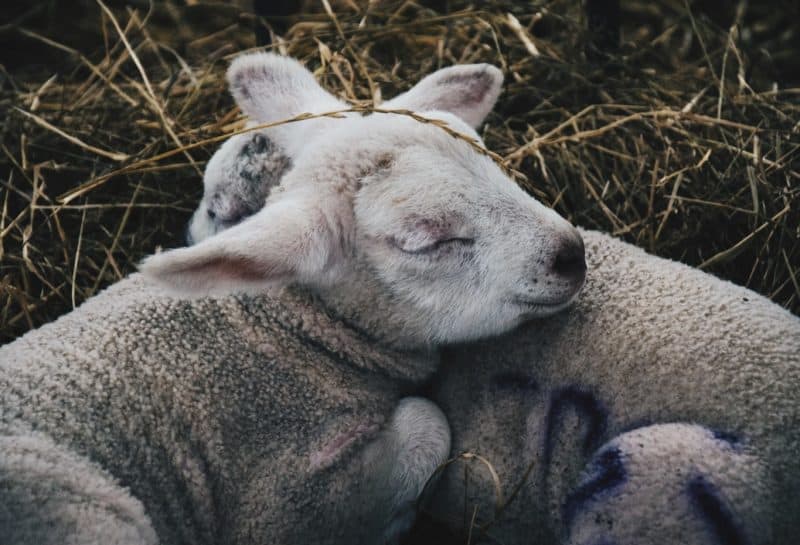
It’s important to ensure that your weaning lambs have access to plenty of fresh, clean water. Be mindful of the quality of the water, too, as lambs can’t handle salt as well as adult sheep. You may have to supplement with vitamins E and A. This is usually only necessary if your weaned lambs don’t have access to fresh pasture, too.
You can also restrict water for about 24 hours. Some shepherds actually recommend this, but I would personally steer clear. This isn’t necessary as long as the lambs are at least 60 days old. It can also be risky to limit water during warmer weather, so I would recommend against this.
Challenges You Might Encounter When Weaning Lambs
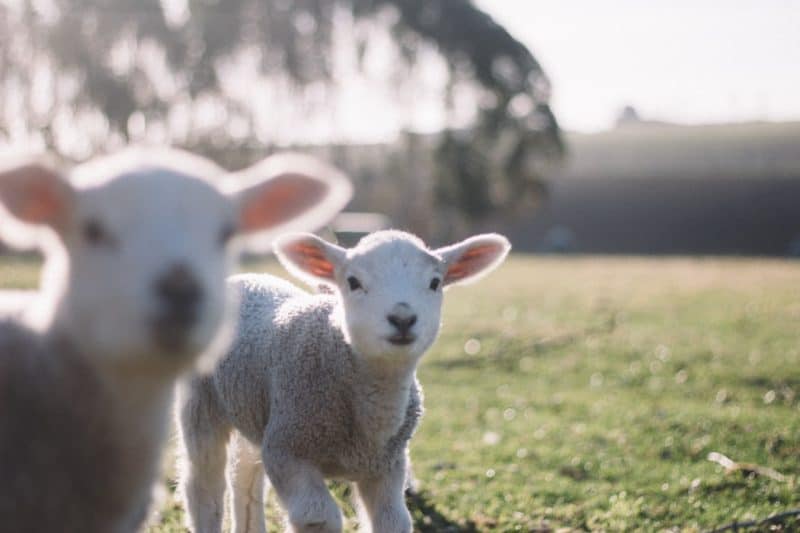
1. Distress
One of the biggest challenges associated with weaning lambs is the constant crying and bleating your lambs (and their mothers!) will make when they are separated.
Often, you can reduce these distress cries by making sure you wean your lambs gradually. You can’t pull your lambs from their mothers and automatically expect everybody to be okay with it!
Instead, give yourself at least two weeks to wean your lambs, as described above.
2. Diseases
Weaned lambs are also more susceptible to various clostridial diseases and internal parasites. Therefore, as soon as your lambs are weaned, you will want to deworm both them and their mothers. Make sure your lambs have been immunized with the CDT vaccine prior to weaning, too.
Make sure all management activities, like castration and ear tagging, are done well before you wean your lambs. This can cause additional stress and lead to further health problems.
3. Confusion
One other issue that people frequently have when weaning their lambs is confusion on the part of the lambs. Ewes are better at adapting to their new surroundings than their young. The ewes will be able to figure out how to find food and water, while lambs might not.
If you do this the other way around, you may find that the lambs lose a large amount of weight once they are weaned. This is due to the stress of trying to get used to a new location.
Otherwise, weaning lambs is not difficult to do. In many cases, the weaning process will be natural and guided by both a mother ewe and her young. Good luck!
